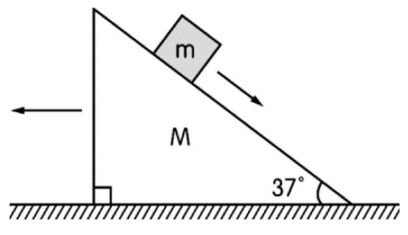載入中..請稍候..
【詳解卡福利】寫作批改懸賞券,將於 2025/04/30 23:59:59 過期,還沒使用或領取,趕快前往領取並使用吧! 前往查看
6.有一不帶電的厚金屬球殼,球殼內半徑為R、外半徑為2R,圓心處置入點電荷Q,此時2R處的電位如V-r關係圖上的D點,圖上的h、f、p、g為一次反比線,請準確畫出空間上電位V隨距離r之變化圖。(所畫線條請勿過粗,能明確判讀對應數值,且畫滿方格紙範圍)
5.質量M、斜角θ=37°的楔形木塊,靜止於光滑水平地面上,有質量為m的物體自楔形木塊頂端由靜止開始沿斜面下滑,如圖所示。假設M=7m,且M、m之間動摩擦係數為μ,重力加速度量值為g。
請推導出物體下滑期間,地面對楔形木塊的正向力與M、m間之動摩擦係數μ的關係。
4.質量不計、長度為L的輕桿,連接一質量為M、長度為2L的木棒,兩者成一直線。輕桿和木棒皆可視為剛體,將輕桿一端以樞紐懸掛於懸點O,並將其由擺角θ0靜止釋放,如圖所示。不計任何阻力或摩擦力,重力加速度量值為g。請用質心概念 對學生講解以下題目 ,每一小題都必須用到質心概念,只需列出詳細計算過程, 不需算出答案 :
(3)已知最低點時木棒質心速度為 ,則此時輕桿對木棒的作用力。
,則此時輕桿對木棒的作用力。
The founder of Pulitzer Prizes, Joseph Pulitzer, remains unrivaled in terms of the contributions and legacy to modern journalism. A titan of the press in the Gilded Age, Pulitzer was not merely a publisher—he was an architect of modern journalism, a crusader for the public good, and a man whose name would come to symbolize both the noblest and the most sensationalist aspects of the Fourth Estate.
21 He infused the World with a dynamic mix of investigative journalism, human-interest stories, illustrations, crime reports, sports coverage, and serialized fiction—a multi-layered approach designed to appeal to a broad, diverse readership. His use of eye-catching headlines, bold typography, and compelling visuals turned reading the news into a daily ritual, not just for elites, but for immigrants, laborers, and the working class.
Pulitzer’s innovations weren’t just cosmetic. 22 He emphasized the importance of fact-finding, documentation, and accountability, laying the groundwork for investigative journalism as a pillar of democratic society.
23 In the early 1890s, the World exposed a far-reaching web of fraud and corruption linked to the failed French attempt to build a canal across Panama. Tens of thousands of investors were defrauded as the company collapsed, and Pulitzer’s investigative team traced a trail of bribery that implicated not only foreign financiers but powerful figures in the United States. Among those named: financier J.P. Morgan, whose banking syndicate had helped facilitate the U.S. purchase of the French company's assets, and, most controversially, President Theodore Roosevelt himself. The World accused Roosevelt’s administration of engaging in a secretive and possibly unlawful arrangement to acquire the canal rights, alleging the American public had been misled and taxpayers defrauded. 24 The backlash was swift and severe. Outraged by the accusations, President Roosevelt called Pulitzer’s reporting "a lie from start to finish." 25 The administration claimed the publisher had defamed the government and sought to punish him for what Roosevelt described as “a crime against American honor.” But Pulitzer, ever the fighter, did not back down. 26 The indictment ultimately collapsed in court, with judges ruling that criticism of public officials—even the President—was protected speech, and that truth was an absolute defense.
It was a landmark moment. The failed attempt to criminally prosecute Pulitzer not only vindicated his reporting, but also reinforced the First Amendment protections that remain central to American journalism to this day. 27
(AB)The paper insisted that the public deserved transparency over how national decisions of such magnitude were being made behind closed doors.
(AC) The rivalry with Hearst, once marked by sensationalism, has faded into a cautionary tale about the power and perils of the press.
(AD) He pioneered the use of dedicated beats for reporters, assigning journalists to cover City Hall, the police, education, labor, and public health with sustained focus.
(AE)He defended The World’s reporting as truthful and essential to the public interest, declaring that "our Republic and its press will rise or fall together."
(BC) But perhaps nothing tested Pulitzer’s resolve—or his ideals—more than the explosive revelations surrounding the French Panama Canal Company.
(BD) Under Pulitzer’s leadership, the World became the most widely read newspaper in the country—and, in many ways, the prototype for the modern newspaper as we know it today. (BE) In an unprecedented move, federal prosecutors sought to indict Pulitzer for criminal libel, a charge that threatened not just his reputation but the very principle of a free press. (CD) The 1911 Supreme Court victory established important precedent for the First Amendment, guaranteeing freedom of the press for generations to come.
27.
26.
25.
This is a large modal.